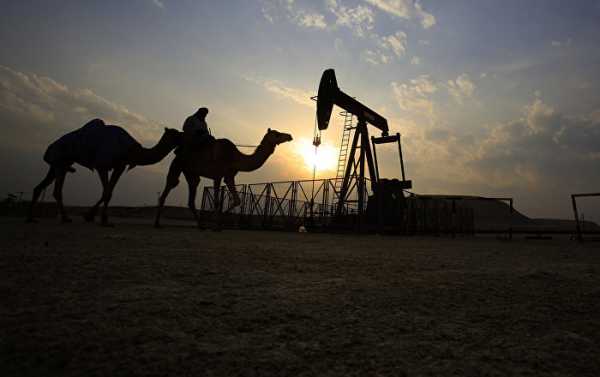
Expectations for a drop-off in Beijing’s demand for foreign oil has led some market watchers to conclude that India will overtake China in the years to come in driving global oil demand.
The oil and gas ministers of Bahrain and Oman have voiced concerns that China’s demand for oil may fall due to its ongoing trade dispute with the United States after President Trump warned about piling tariffs on another $200 billion in Chinese goods as soon as next week.
“I think there is a risk on the demand side,” Bahrain oil minister Sheikh Mohammed bin Khalifa Al Khalifa said, speaking to CNBC on Monday. “Obviously, the trade issue is going to impact demand in a negative fashion if it continues and persists. You’ve got the strong dollar, which is another factor,” the minister said.
Oman’s oil minister, Mohammed bin Hamad Al Rumhy, was similarly apprehensive. “People often focus on the supply side – what happens if Iran stops supplying – but what happens if China reduces its consumption? So we are looking at both sides of this discussion,” he said.
“If there is a serious trade disagreement between the US and China, the Chinese consumption of energy will be impacted negatively, from our point of view, and the ability to produce and export will be impacted,” the minister added, speaking at the ongoing World Heavy Oil Congress in Muscat, Oman.
China, sometimes referred to as the ‘workshop of the world’, exported goods and services worth $431 billion to the US in 2017, nearly 20 percent of the total. By charging Beijing with ‘unfair trade practices’, President Trump has threatened to slap tariffs on the entirety of Chinese goods coming into the US in a bid to improve the US trade balance, thereby risking a slowdown for Chinese producers.
China surpassed the United States to become the world’s largest importer of crude oil in 2017, importing some 8.4 million barrels per day (BPD), compared with 7.9 million bpd for the US, according to US Energy Information Administration statistics. Some 56 percent of China’s imports came from the OPEC countries, most of which are situated in the Middle East. Amid warming ties between Moscow and Beijing, Russia’s oil sales to China have also been rising, hitting 1.2 million bpd in 2017, comprising some 14 percent of the country’s imports and surpassing Saudi imports (1 million bpd for the same period).
Also this week, Chinese state-owned energy company PetroChina announced plans to boost both oil and gas production by 1 percent and 4-5 percent, respectively, over the next five years. According to a 2018 report by the International Energy Agency, China is expected to account for some 37 percent of the global increase in natural gas consumption between 2017 and 2023.
Meanwhile, late last month, the research and consultancy group Wood Mackenzie reported that India may overtake China as the biggest source of growth for oil demand by 2024, with Delhi’s demand expected to grow by 3.5 million bpd between 2017 and 2035, up from the 4.7 million bpd consumed in 2017.
According to India’s Population Reference Bureau, at the moment, the Indian and Chinese populations are estimated to be 1.37 and 1.39 billion respectively, and India is expected to be the world’s most populous nation within several years. Meanwhile, China’s GDP is expected to soon exceed that of the US.
Sourse: sputniknews.com






